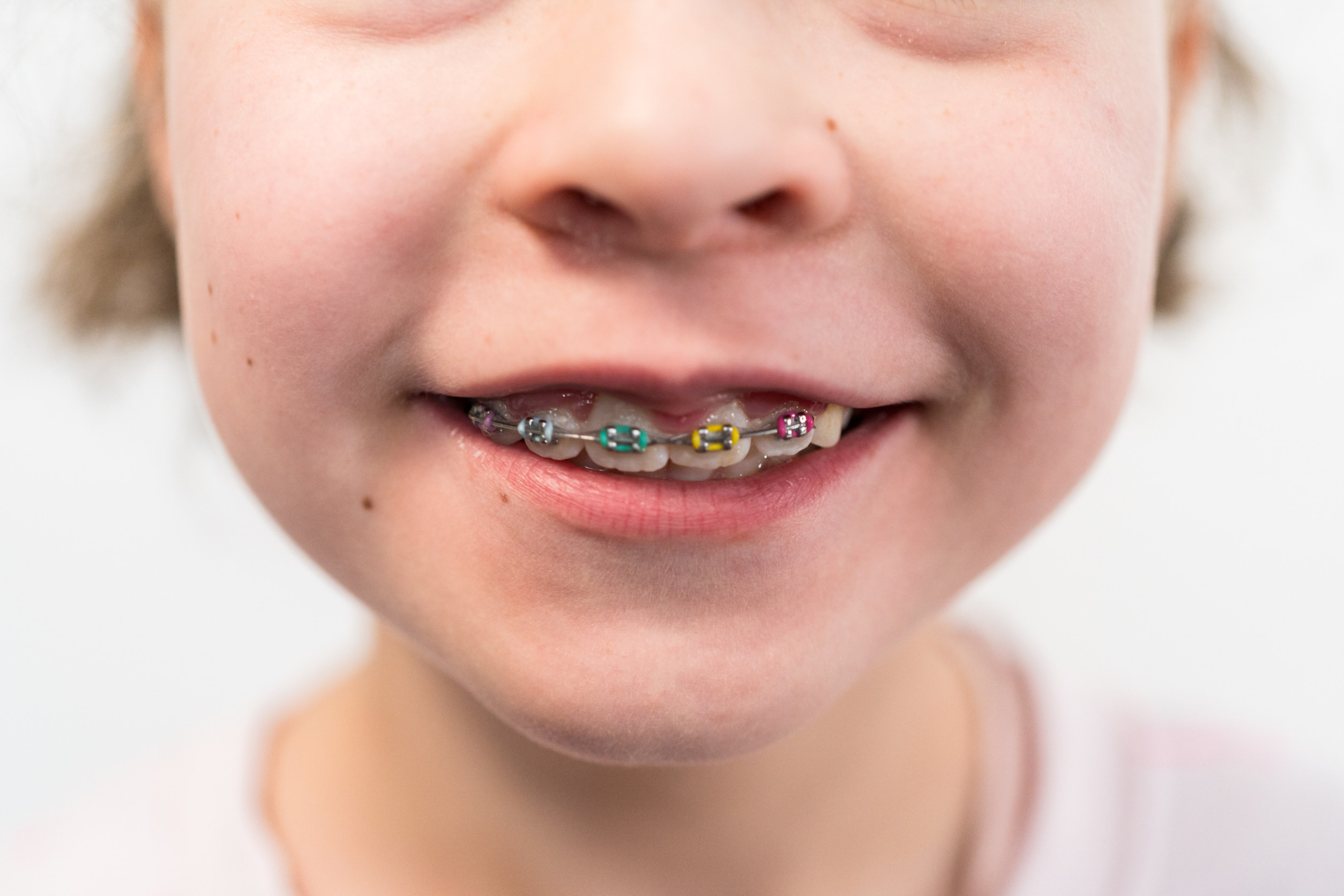Many parents wonder when is the right time to consider braces for their child. While some orthodontic concerns are obvious—like visibly crooked teeth—others can be more subtle and only detectable during a professional evaluation. Recognizing the early signs of orthodontic problems can help you take action at the right time, ensuring your child develops a healthy smile and bite that will last a lifetime.
Why Early Orthodontic Evaluation Matters
The American Association of Orthodontists recommends that children have their first orthodontic evaluation by age 7. At this age, an orthodontist can detect bite issues, crowding, or jaw growth problems that may be easier to correct while your child is still growing.
An early evaluation doesn’t necessarily mean your child will get braces right away. Sometimes, the orthodontist will simply monitor development over the next few years. But in certain cases, starting early orthodontic treatment can prevent more serious problems later.
Common Signs Your Child May Need Orthodontic Care
1. Early or Late Loss of Baby Teeth
If your child loses baby teeth too early or too late compared to their peers, it may affect how the permanent teeth come in. Premature loss can cause neighboring teeth to shift into the empty space, leading to crowding, while delayed loss can block permanent teeth from erupting properly.
2. Crowded or Overlapping Teeth
Crowding happens when there’s not enough room in the jaw for all the teeth to fit in alignment. This can cause teeth to overlap or twist. Not only can this affect appearance, but it also makes brushing and flossing more difficult, increasing the risk of cavities.
3. Difficulty Biting or Chewing
If your child struggles to bite into certain foods, chews unevenly, or avoids certain textures, it may indicate a bite problem. An overbite, underbite, or crossbite can make eating uncomfortable and even impact digestion over time.
4. Mouth Breathing
Chronic mouth breathing, especially at night, may be linked to jaw development issues. An orthodontist can assess whether this habit is related to the alignment of your child’s teeth or jaw structure.
5. Thumb Sucking or Prolonged Pacifier Use
While thumb sucking and pacifier use are normal in early childhood, continuing the habit beyond age 4 can lead to misaligned teeth and changes in jaw shape. These habits can push teeth forward and create an open bite.
6. Speech Difficulties
Speech issues—like a lisp or difficulty pronouncing certain sounds—can sometimes be linked to tooth or jaw misalignment. Correcting these issues early can help with both oral health and communication skills.
7. Protruding Teeth
Teeth that stick out too far (often called “buck teeth”) are more susceptible to damage from accidents. This is a common reason why some children benefit from braces at a younger age.
8. Jaws That Shift or Make Noises
If you notice your child’s jaw shifting when they open or close their mouth, or if you hear clicking or popping sounds, it could be a sign of misalignment or temporomandibular joint (TMJ) concerns.
The Role of Early Orthodontic Treatment
Early orthodontic treatment, often called Phase 1 treatment, addresses developing problems before they become more severe. This phase might include dental braces, spacers, or other appliances designed to guide jaw growth and create space for incoming permanent teeth.
Phase 1 treatment can help:
- Correct harmful oral habits
- Guide jaw growth for better alignment
- Make future treatment shorter and more effective
- Reduce the risk of tooth trauma
Once the permanent teeth have fully erupted, Phase 2 treatment—which may include braces or Invisalign—can fine-tune the alignment and bite.
How an Orthodontist Can Help
A trained orthodontist has the tools and expertise to identify subtle dental and skeletal concerns that a general dentist might not catch. Through X-rays, digital scans, and bite assessments, they can determine whether your child needs treatment now or in the future.
At East Tennessee Orthodontics, we focus on creating personalized treatment plans that prioritize your child’s comfort, health, and long-term smile goals.
Preparing Your Child for Their First Orthodontic Visit
If you’ve noticed one or more of the signs listed above, the next step is to schedule a consultation. Here’s what you can expect:
- Initial Examination – The orthodontist will look at your child’s teeth, bite, and jaw alignment.
- Diagnostic Imaging – X-rays or digital scans may be taken to assess the teeth that haven’t erupted yet.
- Treatment Recommendations – If needed, you’ll receive a customized plan for either immediate treatment or future monitoring.
For many kids, the first visit is simply about gathering information and building comfort with the idea of orthodontic care.
Supporting Your Child Through Treatment
If your child does need braces or other early intervention, a positive attitude from you as a parent can make all the difference. Encourage them, remind them of the benefits, and make sure they follow their orthodontist’s instructions for care and maintenance.
For example, knowing what life with braces is like can help your child prepare for eating adjustments, cleaning routines, and regular checkups.
Final Thoughts: Don’t Wait to Address the Signs
The earlier you address orthodontic concerns, the better the outcome for your child’s oral health and confidence. Even if you’re unsure, an early evaluation gives you peace of mind and a plan for the future.
If you’ve noticed any of these warning signs, now is the time to schedule your child’s first visit with East Tennessee Orthodontics. Our experienced team will guide you every step of the way toward a healthier, happier smile.




